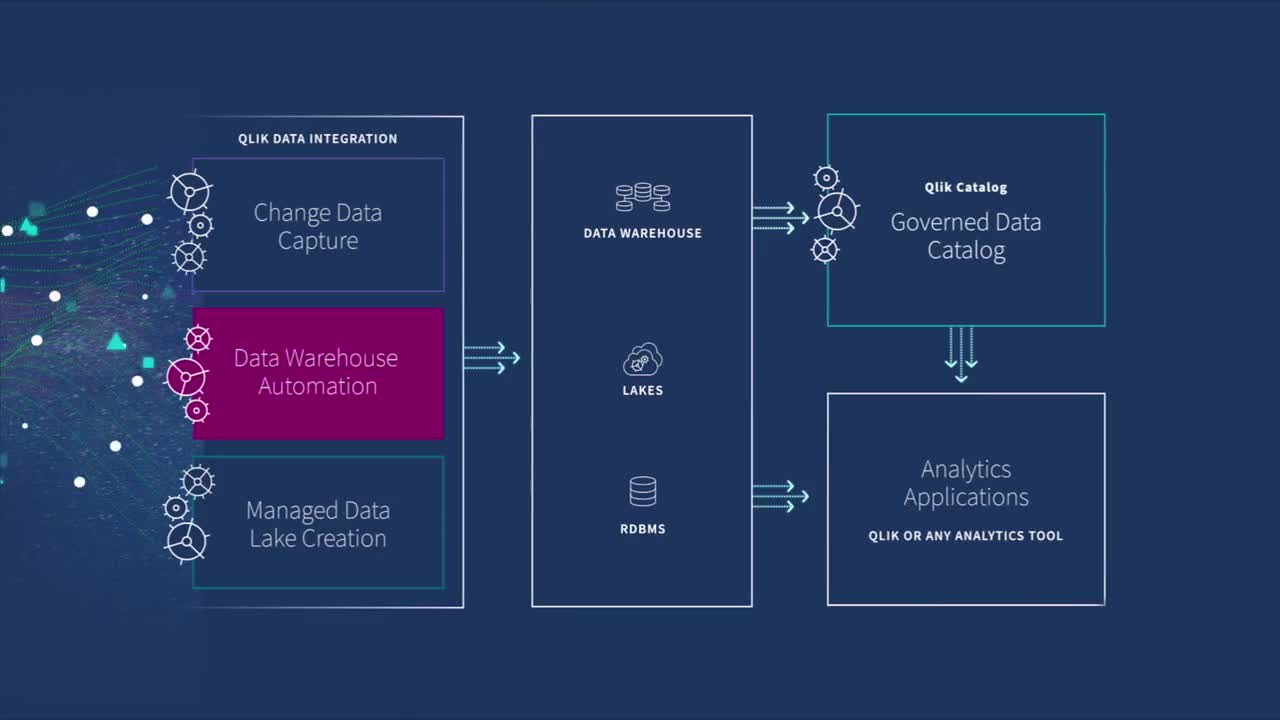ETL TOOLS
What are ETL tools?
ETL tools are used to consolidate and transform multi-sourced data into a common format and load the transformed data into an easy-to-access storage environment such as a data warehouse or data mart. The letters ETL stand for Extract, Transform, and Load, one of the five key data integration patterns. To enable reporting and analytics for business intelligence programs, enterprises gather and aggregate data from a variety of internal systems and external sources including CRM and ERP applications, web services, and connected devices.
This 2-minute video shows what ETL tools are and the different approaches to solve this challenge.
The "ETL" in ETL tools refers to the processes of:
- Extracting or retrieving data from homogeneous or heterogeneous data sources
- Transforming or cleansing, filtering, and reformatting data to make it usable by different systems or applications
- Loading transformed data into a target database, data warehouse, data mart, or other type of analytical repository
Download the eBook to see a side-by-side comparison of the leading cloud data warehouse vendors.
Using ETL Tools for Data Warehousing
Many companies have traditionally used ETL tools to build and maintain the data warehouse. Leveraging an ETL solution enables you to write code to execute ETL tasks for mapping data elements, identifying and controlling dependencies between components, scheduling jobs, and managing data flows, via a graphical user interface.
Depending on the particular data integration solution used, ETL tools may offer the added benefits of structured system design, team-based development capabilities, and pre-built connectors optimized for a wide range of data sources and targets.
Popular ETL Tools resources
ON-DEMAND WEBINAR
Express Scripts Driving Digital Transformation from Mainframe to Microservices
Better Than ETL Tools: Data Warehouse Automation
Building and maintaining a data warehouse can require hundreds or thousands of ETL tool programs. As a result, building data warehouses with ETL tools can be time-consuming, cumbersome, and error-prone — introducing delays and unnecessary risk into BI projects that require the most up-to-date data, and the agility to react quickly to changing business demands. Purpose-built for data architects, Qlik Compose® is an agile data warehouse automation and transformation platform that eliminates the need for conventional ETL tools by automating repetitive, labor-intensive tasks associated with ETL integration and data warehousing.
Qlik Compose enables ETL automation—freeing you from error-prone manual coding—and it automates the entire data warehousing lifecycle from design and development to impact analysis and change management. Our solution automatically generates the ETL commands, data warehouse structures, and documentation necessary for designing, building, and maintaining your data warehouse program, helping you save time, reduce cost, and reduce project risk.

Moreover, through seamless integration with Qlik Replicate®, our real-time event capture and data integration solution, our platform enables real-time ETL by combining real-time source data integration with automated ETL generation—and supports the widest ecosystem of heterogeneous data sources including relational, legacy, and NoSQL data stores.
Additionally, Qlik Compose enables real-time data warehousing that can be deployed on Amazon Redshift. With our integrated Qlik Replicate solution, enterprises can relay incremental source updates with continuous change data capture technology to deliver real-time big data analytics in the Cloud.
Learn more about ETL tools
-

Related Documents
-

Related Products
-

Related Solutions

